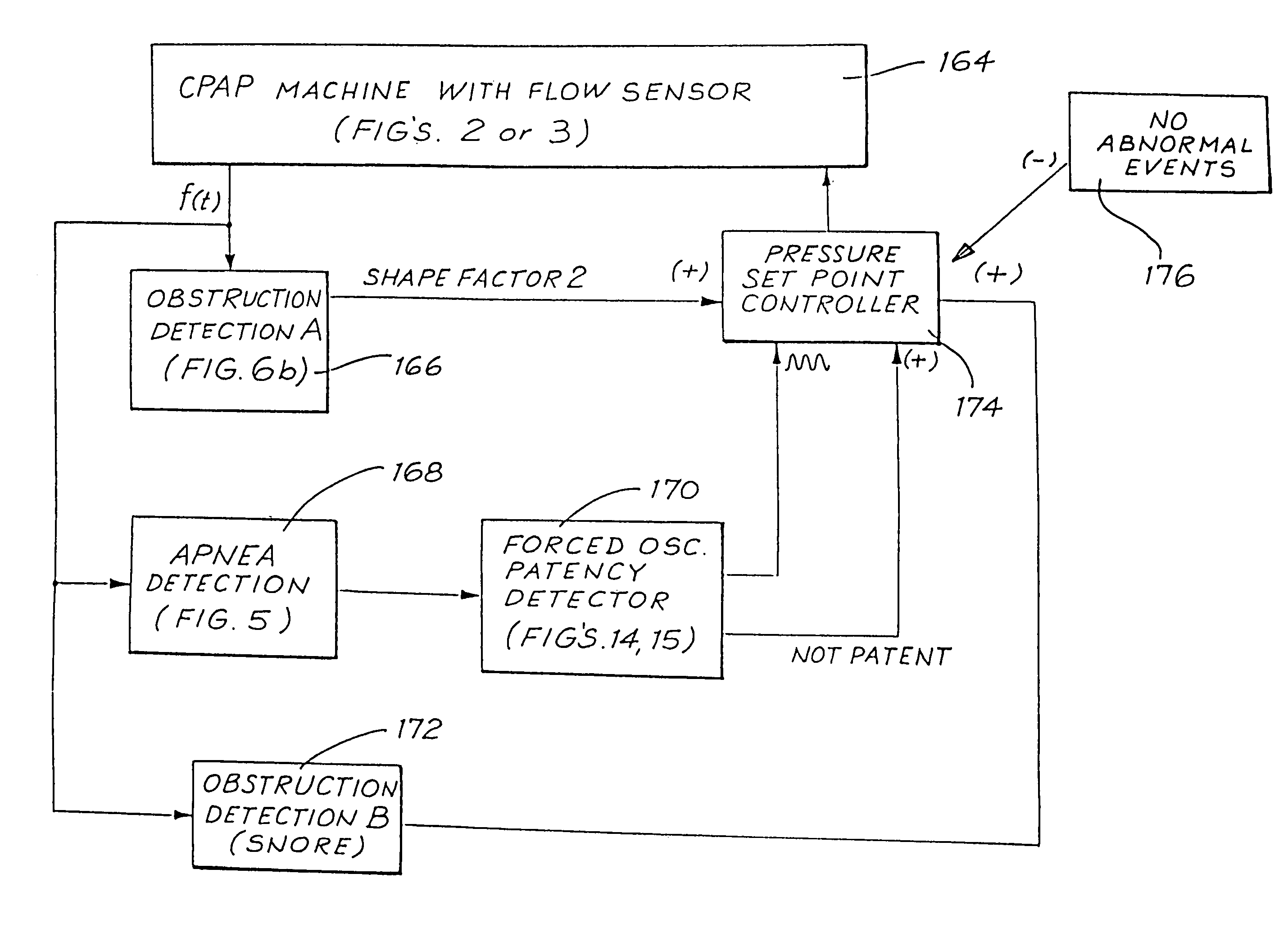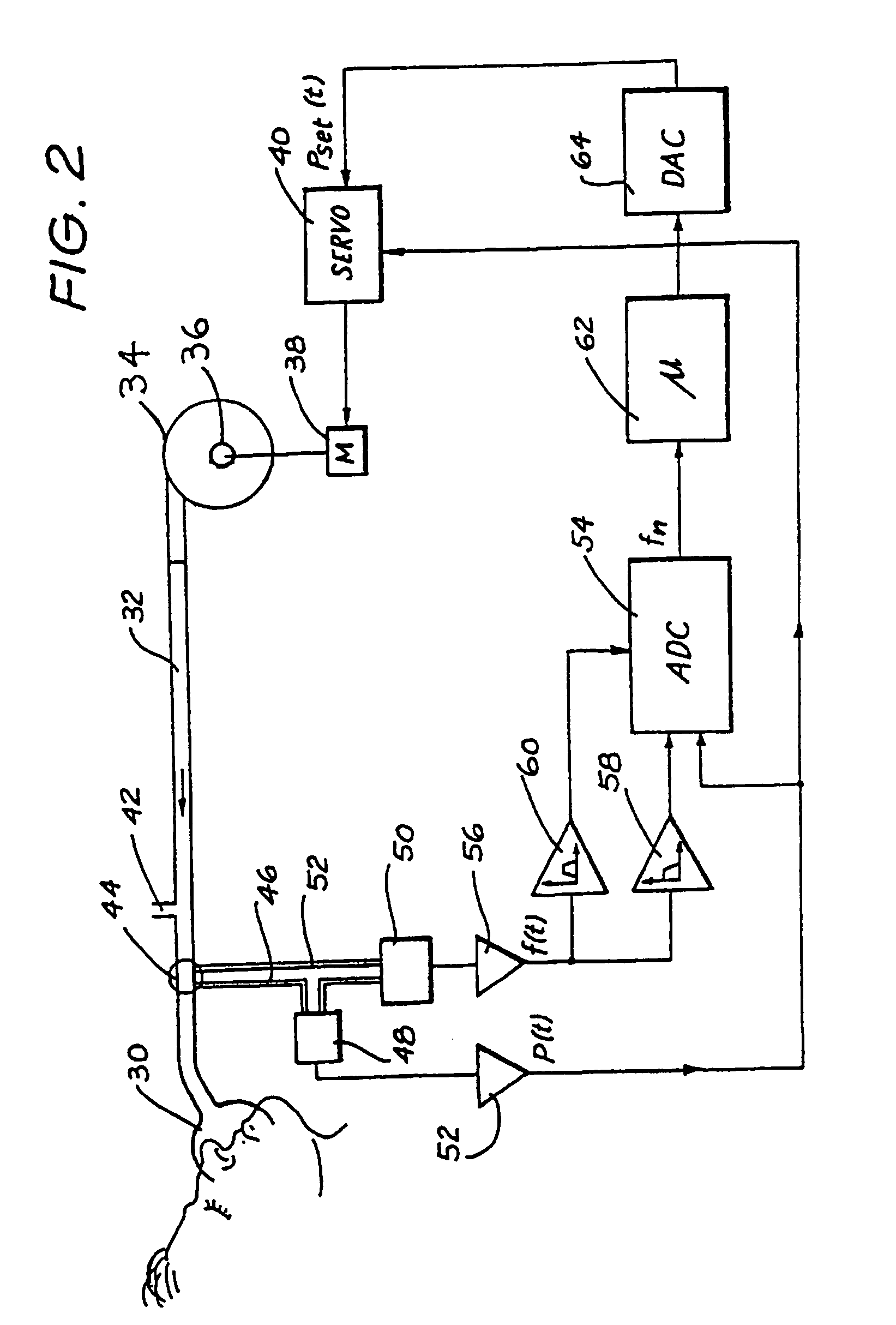Determination of patency of the airway
a technology of airway and patency, which is applied in the direction of process and machine control, instruments, diagnostic recording/measuring, etc., can solve the problems of decreased blood oxygenation, decreased ventilation (hypopnea), and disruption of sleep
- Summary
- Abstract
- Description
- Claims
- Application Information
AI Technical Summary
Benefits of technology
Problems solved by technology
Method used
Image
Examples
Embodiment Construction
[0118]FIG. 1 is a flow diagram of the basic methodology of one embodiment. The first step 10 is the measurement of respiratory flow (rate) over time. This information is processed in step 12 to generate Index values to be used as qualitative measures for subsequent processing. Step 14 detects whether an apnea is occurring by comparison of the Breathing Index with a Threshold value.
[0119]If the answer in step 14 is “Yes”, an apnea is in progress and there then follows a determination of patency in step 20. If there is patency of the airway, a central apnea with an open airway is occurring, and, if desired, the event is logged in step 22. If the result of step 20 is that the airway is not patent, then a total obstructive apnea or a central apnea with closed airway is occurring, which results in the commencement or increase in CPAP treatment pressure in step 18. If desired, step 18 may include the optional logging of the detected abnormality.
[0120]If the answer in step 14 is “No”, the ...
PUM
 Login to View More
Login to View More Abstract
Description
Claims
Application Information
 Login to View More
Login to View More - R&D
- Intellectual Property
- Life Sciences
- Materials
- Tech Scout
- Unparalleled Data Quality
- Higher Quality Content
- 60% Fewer Hallucinations
Browse by: Latest US Patents, China's latest patents, Technical Efficacy Thesaurus, Application Domain, Technology Topic, Popular Technical Reports.
© 2025 PatSnap. All rights reserved.Legal|Privacy policy|Modern Slavery Act Transparency Statement|Sitemap|About US| Contact US: help@patsnap.com



